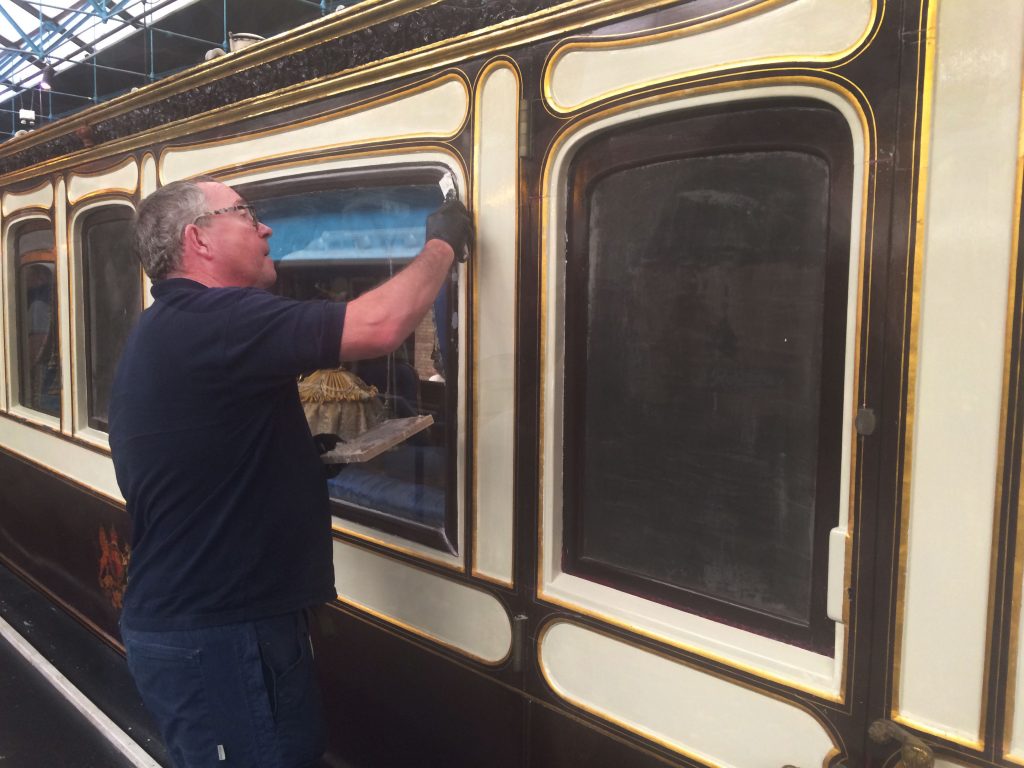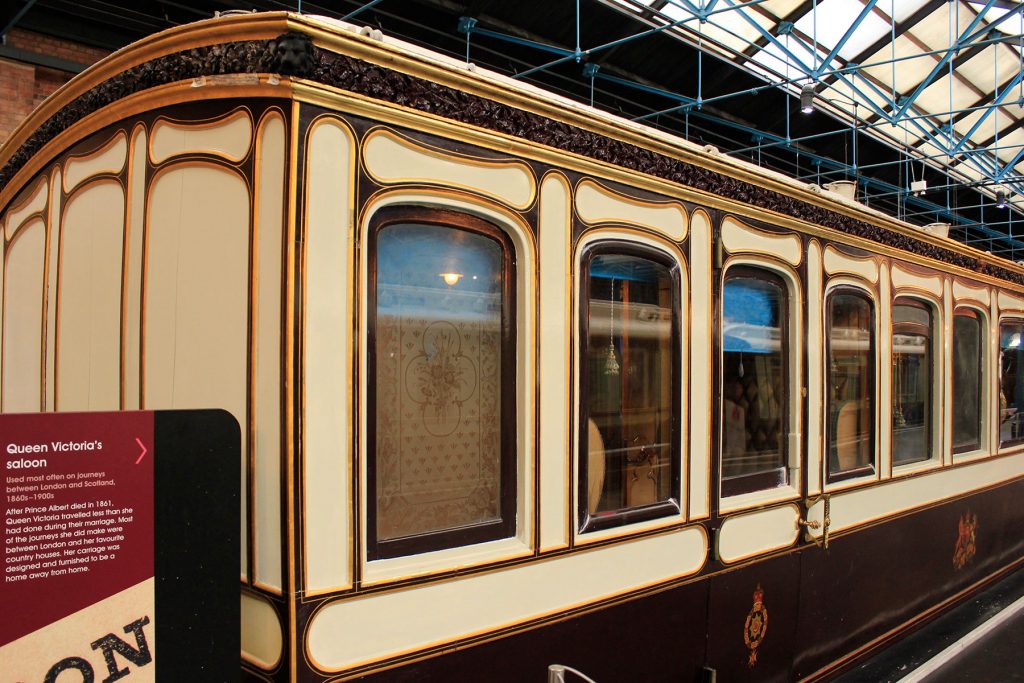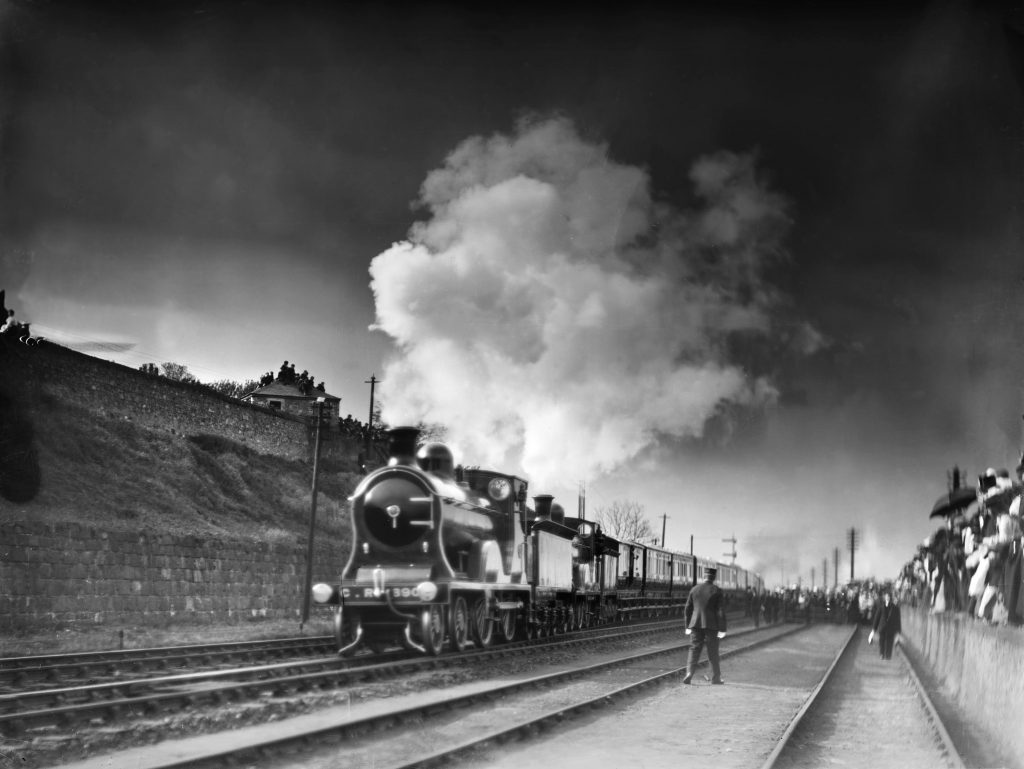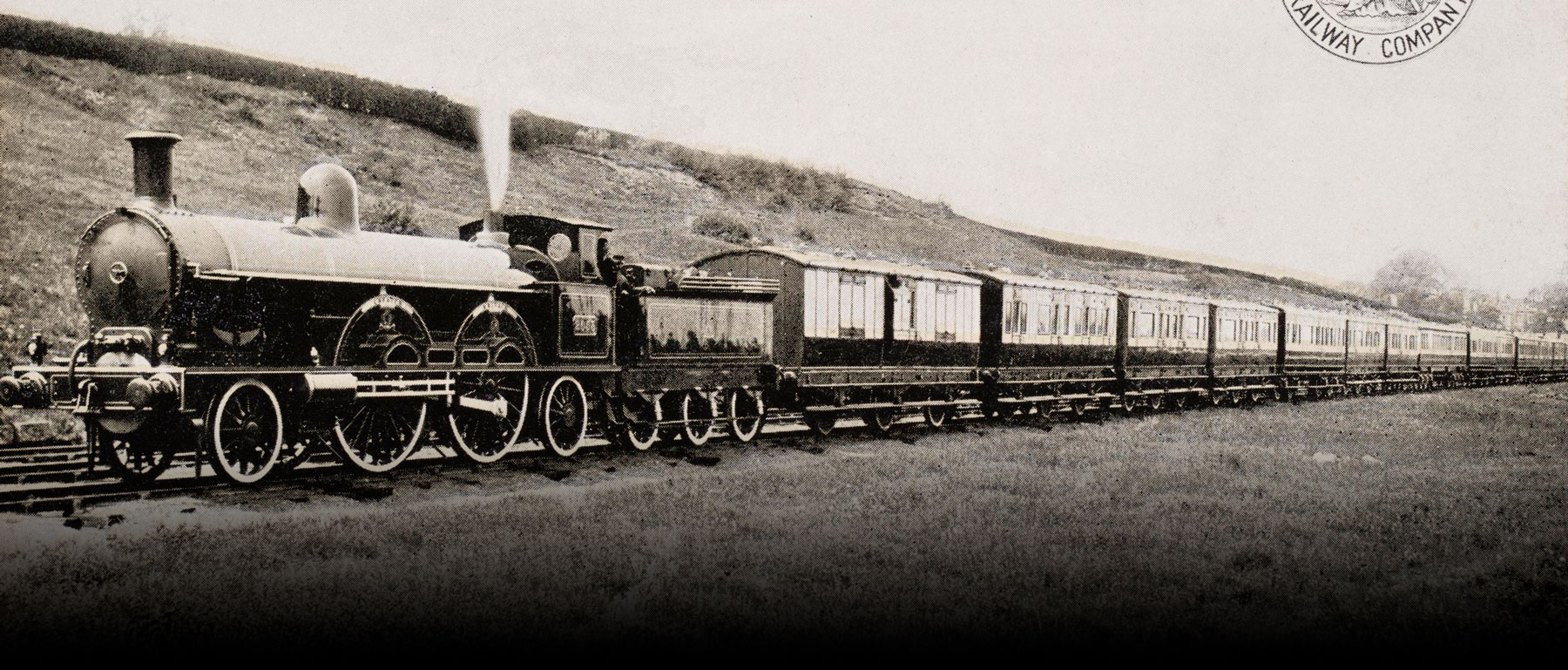Our resplendent royal carriages are some of the most popular objects in our collection, fascinating visitors every day with their finery—and with the stories they tell of how Britain has changed over the past 150 years. Looking after them is a challenge, but one that our dedicated conservation team—Wendy Somerville-Woodiwis, Chris Binks, Martyn Halman, Catherine Fairless and Helen de Saram—are more than equal to, as we found out on a Friday afternoon in Station Hall when Chris and Wendy were hard at work.
The first thing that Chris is keen to stress is that the team’s work is about conservation, rather than restoration. The two are closely linked, but Queen Victoria’s carriage and vehicles like it (‘antiques on wheels’) are being preserved for future museum preservation and display, not with the intention of running on the rails again.
This afternoon he’s busy building up small cracks in the window frames using a filler, in order to smooth out any visible dents or chips. The carriage’s interiors have been given a good dose of TLC in recent years and are in good condition, but the exteriors are ready for the same attention. Chris jokes that he told the Prince of Wales on a visit in 2013 that the whole job could be done in 18 months—thankfully he hasn’t been back to check!

So far, the top rails have been regilded, as have several areas of the carriage side. Paint has been stripped from the panels and repainted in primer, base coat and a first coat of gloss—it’ll be a while before the team even think about varnishing. If the painting was being done for outside running, the carriage could need up to 11 coats of varnish, but for museum preservation it thankfully won’t need quite that much.
The bottom panels are in LNWR carmine lake—a brown paint which is actually closer to purple when you handle it. Combined with the LNWR flake white of the top panels, the scheme is colloquially known as ‘plum and spilt milk’. During previous preservation work over 50 years ago, these bottom panels were coated in shellac, which cracks and flakes over time. The new paint job will instead be finished using Paraloid B72, a non-yellowing acrylic resin which is more flexible, and, crucially, more easily reversible—so if future conservators have a better idea, no lasting damage will have been done.

Possibly the most exciting thing to look out for at this stage in the project is the beautiful frieze along the top of the carriage. Over the several weeks that the team have been working on it, it’s been transformed from a somewhat indistinguishable brown pattern to a magnificently defined, glossy floral decoration depicting the flowers of the British nations.
To achieve this, nine layers of life-expired paint dating from the original 1869 coat right up to the carriage’s days at Clapham Museum in the 1960s needed to be removed and analysed. Castings were then taken from the parts of the frieze in good condition using Steramould (also used to make dental impressions!) and new castings produced from epoxy resin. This replaced the original gesso plaster—surprisingly, the frieze turned out not to be wood like the rest of the carriage as the team had expected. This plaster is the same as was used in gilt picture frames, and was originally made from a mixture of pipe clay and rabbit-skin glue—not ideal conservation materials now, but as Chris points out, the Victorians weren’t afraid to try things out!
Working in situ in Station Hall is a necessity because the historic wooden carriage can’t be run on the rails to get it into the paint shop for safety reasons. But there’s actually real benefit to working this way—our visitors get to see real conservation work in action and discover just how much time and concentration is required to return a royal carriage to its former splendour. The team are able to answer questions and encourage visitors’ curiosity about how we look after our incredible collections, so in many ways it’s win-win.

If you’re visiting the museum, make sure to drop by the royal carriages as you explore Station Hall. Look out for the floral frieze (see if you can make out the English rose and Scottish thistle) and discover what else the conservation team have been up to in the meantime. Restoration work like this takes time and patience, so there’ll be plenty more to see over the coming weeks and months.
Header image: The London & North Western Railway’s royal train at Wolverton, 25 May 1897. This official photograph was used on postcards issued by the LNWR in the early 20th century.

Fascinating reading. So good that the present is able to preserve the past for the benefit of the future.
Fascinating insight, hopefully there will be more.